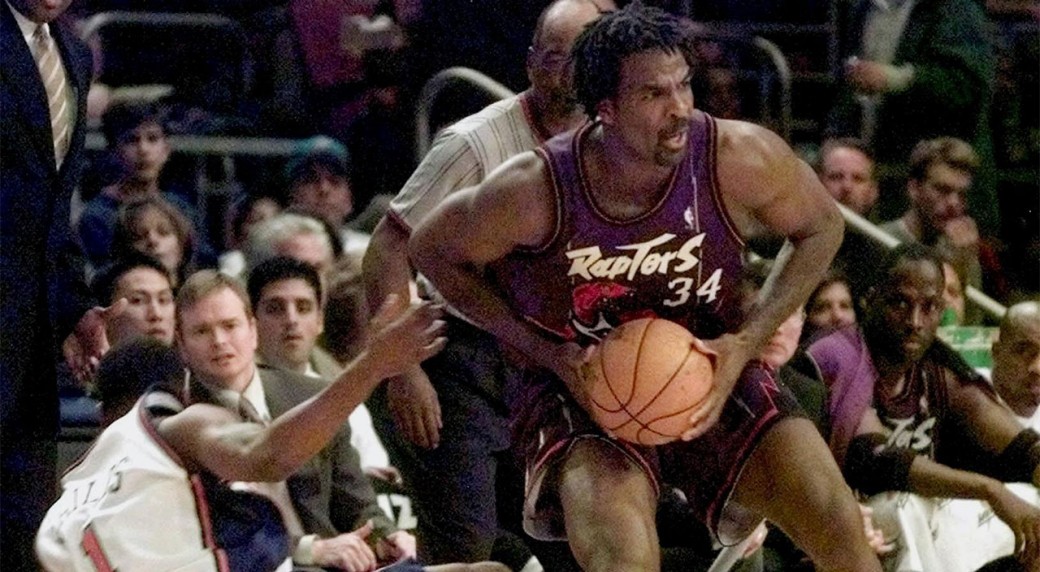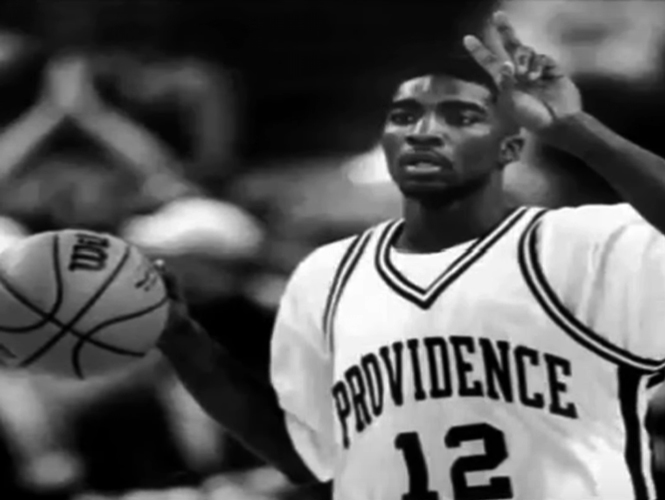Some of you know exactly what I’m talking about.
Everyone knows about Mo Pete’s shot against Washington, Alvin Williams game-sealing jumper against the Knicks, Vince’s dunk performance and the list goes on. There are other moments that have left equally deep impressions on Raptors fans and have carved the identity of what it means to be a supporter. They don’t get coverage because they’re either forgotten due to the pain they inflicted or because in the larger stretch these moments did not lead to a material outcome worth remembering. Much like in a book when you highlight a sentence or two and later forget about it, these are moments that once you re-visit they rekindle a feeling. This is one such moment.
The scene is the Air Canada Centre on May 13, 2001. The Raptors are up 2-1 in the series having split the opening two games in Philly followed by a demolition of the Sixers in Game 3 at home, setting up a situation where they can go up 3-1 in the series by winning pivotal Game 4. The game is broadcast on NBA on NBC – national coverage in the US. You don’t even need an antenna.
With 1:10 left and Philly up 83-79, Eric Snow has Charles Oakley on the switch and misses a mid-range jumper which Dikembe Mutombo rebounds as Antonio Davis gets pushed under the rim. The groans from the ACC crowd say it all. Oakley, having already forced Snow into a jumper, comes up big again by picking off an Aaron McKie pass for Mutumbo (McKie was the guy who was guarding Vince when he missed the Game 7 jumper). The Raptors reclaimed possession with 51 seconds left and down four. Oakley has the rock.
Let’s pause and talk about the big man at the time. Unlike today the idea of a 4 or 5 bringing the ball up the court was rare. There were perhaps a handful of players that anyone trusted even dribbling a few times after the rebound, let alone bringing it up the court. Kevin Garnett and Toni Kukoc come to mind, maybe Marcus Camby. However, it was a skill that was being noticed around the league. We hadn’t entered the era of the ball-handling big but there was curiosity if not interest in the idea. The skill might have been seen as a differentiator though the league was nowhere close to coming to grasp with the potential of a big man consistently playing the “point forward” role, a term mostly associated with Scottie Pippen. Certainly, Kevin Garnett was a shining example of what could be possible if big men could play the face-up game from further out.
The definition of flamboyance is “the tendency to attract attention because of one’s exuberance, confidence, and stylishness.” That word in the 90s was mainly associated with Dennis Rodman for a variety of reasons which won’t be covered here. There were few other players in the era which could fit the general definition of flamboyance and Charles Oakley was certainly one of them. Having been shipped by the Bulls to the Knicks just prior to Jordan going on his title runs, Oakley always had something to prove. His tenure with the Knicks was successful but frustrating. The Knicks achieved a modicum of success through Patrick Ewing, but ultimately there were far more excruciating and violent playoff losses than there were reasons to celebrate. The 90s Knicks may well compare to the pre-Kawhi Raptors in many respects.
Oakley always had a flare for the dramatic. From settling gambling debts with Jeff McInnis in newsworthy ways to slapping around Charles Barkley, he loved being part of the NBA talk. When the Raptors acquired him for Marcus Camby he embraced the role as the team’s enforcer and emotional pillar, while also seeing it as a means to experiment with some of his skills that the Knicks simply weren’t interested in. Always an above-average passer for a big man Oakley also had a desire to dribble more than he was allowed to in New York. The Raptors being a newish franchise and happy to have a veteran afforded him some of these luxuries.
The Raptors also had Chris Child playing the point guard, a teammate of Oakley in New York, who likely empathized with the big man’s inner desires. My hypothesis was always that Oakley believed he could, to a lesser degree, become somewhat of a ball-handling big man. After all, he had the passing which was a sought-after skill for a big so why not ball-handling? Nobody would suggest he’d become a point forward or even come close, but perhaps he could be a pressure release valve and dribble it on occasion alleviating some tension.
Back to the Game 4 proceedings. Having stolen the ball Oakley looked up and I imagine what met his gaze was an open floor and the opportunity to complete the trifecta: forcing the jumper, stealing the ball and scoring a hoop. He was 2/3rd there already and standing in his way was Allen Iverson to his left while he dribbled with his right hand. Much like Moses would have felt as the sea parted, Oakley galloped down the right side of the court, ball in hand, high dribble and his destiny in sight. There was a fleeting moment of hesitation but he barrelled forward. Here’s the sequence:
Iverson already had three steals in the game and swiftly switched to Oakley’s right, anticipated when he’d pick up the ball, cleanly swiped it and went up the court wasting valuable clock.
That was the difference from potentially being up 3-1 and a path to the NBA Finals in a weak East and losing in seven. The Sixers went on to the lose to the Lakers in the Finals.



